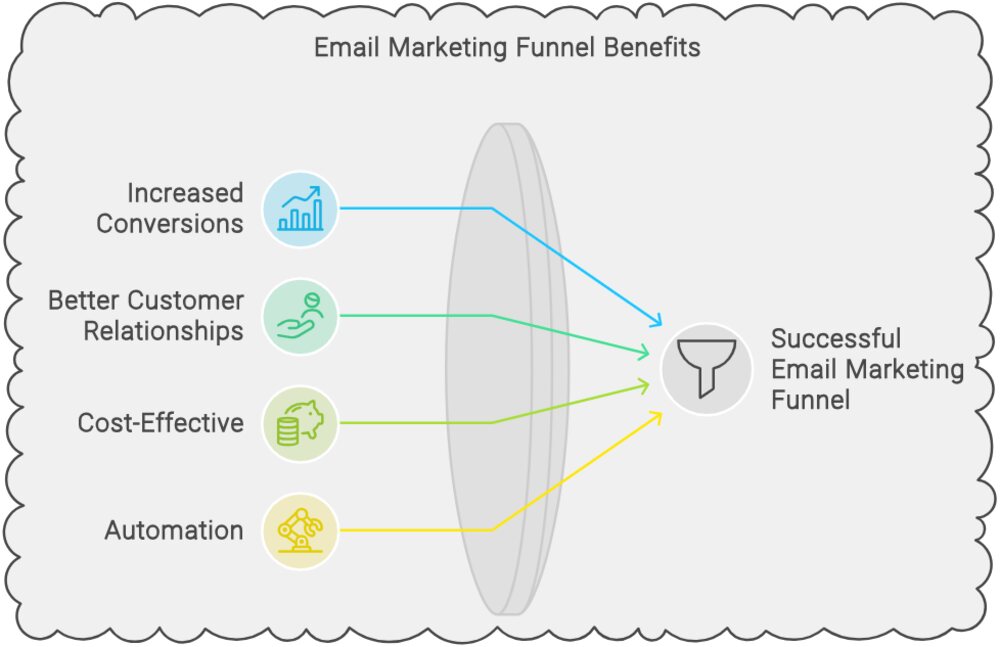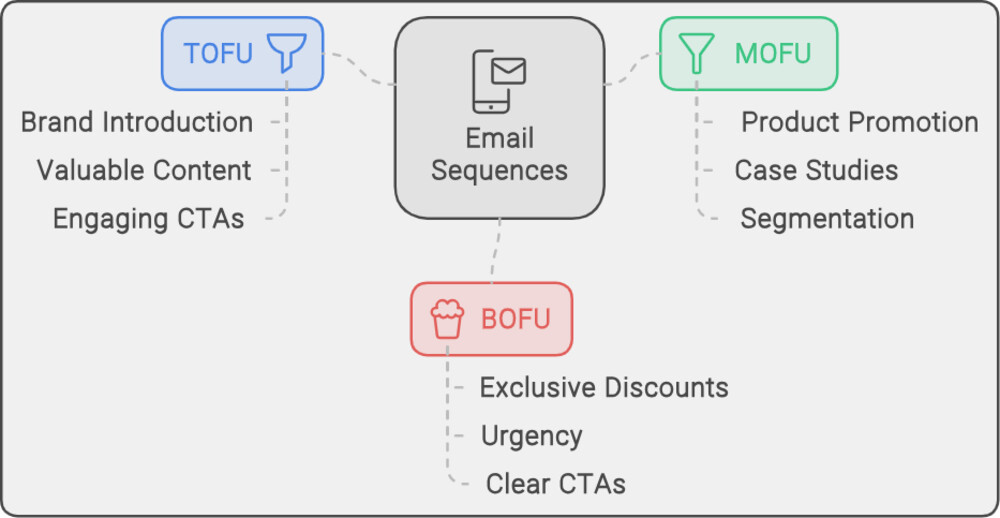Email marketing is a powerful tool that can help businesses of all sizes reach their target audience and grow their brand. However creating and managing email campaigns can be time-consuming, especially if you have multiple lists or are sending out frequent mailings. That’s where ActiveCampaign comes in – the email automation king of 2023.
This blog post will take an in-depth look at ActiveCampaign, discussing its features and capabilities as well as how it compares to other popular email automation solutions on the market. We’ll also provide some tips for getting started with ActiveCampaign so you can make the most of this powerful platform.
What Is ActiveCampaign?
Are you an email marketer looking for a powerful and efficient way to manage your campaigns? ActiveCampaign is a well-known email automation platform, offering features and capabilities that make it easier than ever to create and manage complex email campaigns.
It is an all-in-one email marketing automation platform that enables businesses to create and send targeted email campaigns, automate their sales and marketing processes, and build meaningful relationships with their customers.
ActiveCampaign offers a wide range of features, including email marketing, marketing automation, CRM, sales automation, and messaging, all in one easy-to-use platform. With its intuitive user interface, you can quickly set up automated workflows that save time while still delivering highly targeted messages to your customers.
ActiveCampaign was founded in 2003 and has since grown to serve over 145,000 businesses in 170 countries. The platform is designed to be user-friendly and offers robust features that enable businesses to create highly personalized and targeted email campaigns that drive engagement and conversions.
ActiveCampaign Pricing
ActiveCampaign offers four pricing plans to suit businesses of all sizes and budgets. Here’s a breakdown of each plan:
Lite Plan: The Lite plan is ideal for small businesses and includes email marketing, marketing automation, and CRM features. This plan starts at $29 per month for up to 500 contacts.
Plus Plan: The Plus plan includes all the features of the Lite plan, plus additional features like SMS marketing and lead scoring. This plan starts at $49 per month for up to 500 contacts.
Professional Plan: The Professional plan is suitable for larger businesses and includes all the features of the Plus plan, plus features like site messaging and attribution. This plan starts at $149 per month for up to 500 contacts.
Enterprise Plan: The Enterprise plan is ideal for businesses with advanced marketing needs and includes all the features of the Professional plan, plus features like custom reporting and predictive content. This plan’s pricing varies based on the number of contacts and features required.
ActiveCampaign also offers a free trial period of 14 days, so businesses can try out the platform before committing to a plan.
ActiveCampaign Services & Features
ActiveCampaign offers a wide range of features that enable businesses to create highly personalized and targeted email campaigns that drive engagement and conversions. Here are some of the key features of ActiveCampaign:
Email Marketing Automation
ActiveCampaign offers a drag-and-drop email designer, email templates, and personalization options to create highly targeted email campaigns. Here are some additional email automation features that ActiveCampaign offers to streamline the process:
- Multi-user editing: ActiveCampaign allows multiple users to collaborate on email campaigns in real-time, enabling teams to work together more efficiently.
- Revision history: ActiveCampaign’s revision history feature enables businesses to track changes made to their email campaigns, providing an audit trail of edits.
- Managed deliverability: ActiveCampaign ensures that email campaigns are delivered to customers’ inboxes by managing deliverability rates, reducing the risk of emails being marked as spam.
- Integrations: ActiveCampaign integrates with a wide range of third-party applications, including CRM systems, social media platforms, and e-commerce tools, enabling businesses to manage their marketing efforts from a single platform.
- Conditional content: ActiveCampaign’s conditional content feature allows businesses to show different content to customers based on their behavior and interests, improving engagement rates.
- Mobile optimized: ActiveCampaign’s email campaigns are optimized for mobile devices, ensuring that customers can view and engage with content on their mobile devices.
- Link actions: ActiveCampaign enables businesses to track customer engagement by setting up link actions, such as tracking link clicks or redirecting customers to a specific landing page.
- Custom data: ActiveCampaign’s custom data feature enables businesses to capture and store custom data about their customers, providing insights that can inform future email campaigns.
- Geotracking: ActiveCampaign’s tracking feature enables businesses to track customer location and tailor email campaigns based on location-specific data.
- Audience segmentation: ActiveCampaign’s audience segmentation feature enables businesses to segment their email lists based on customer behavior, interests, and preferences.
- Automated Workflows: ActiveCampaign’s workflows enable businesses to create automated email campaigns based on customer behavior and interests. Workflows can include triggers, such as when a customer opens an email or clicks a link, and actions, such as sending a follow-up email or adding a customer to a specific list.
- Personalization: ActiveCampaign’s personalization options enable businesses to create highly targeted and personalized email campaigns based on customer behavior and preferences. Personalization options include dynamic content, which enables businesses to show different content based on a customer’s interests, and conditional content, which enables businesses to show different content based on customer behavior.
- A/B Testing: ActiveCampaign’s A/B testing feature enables businesses to test different variations of their email campaigns to determine which is more effective. A/B testing can include different subject lines, content, or design elements.
- Free image hosting: ActiveCampaign provides businesses with free image hosting, enabling them to upload and store images for use in their email campaigns.
- Site tracking: ActiveCampaign’s site tracking feature enables businesses to track customer behavior on their website, providing insights that can inform email campaigns.
- Social sharing: ActiveCampaign’s social sharing feature enables businesses to share email campaigns on social media platforms, increasing reach and engagement.
- Analytics: ActiveCampaign provides businesses with in-depth analytics and reporting on the performance of their email campaigns, including open rates, click-through rates, and conversion rates.

In summary, ActiveCampaign offers a range of features related to email automation that can help businesses streamline their marketing efforts, improve customer engagement, and track the performance of their campaigns.
From multi-user editing and revision history to audience segmentation and social sharing, ActiveCampaign provides businesses with the tools they need to succeed in today’s digital marketing landscape. The story doesn’t end here. Apart from email marketing automation, there are a variety of other services that ActiveCampaign can provide to your business.
- Marketing Automation: ActiveCampaign enables businesses to automate their sales and marketing processes, including lead nurturing, scoring, and segmentation.
- CRM: ActiveCampaign’s CRM enables businesses to manage their customer relationships, including lead and contact management, deal tracking, and customer insights.
- Sales Automation: ActiveCampaign’s sales automation features enable businesses to automate their sales processes, including lead qualification, follow-up, and appointment scheduling.
- Messaging: ActiveCampaign’s messaging features enable businesses to communicate with their customers across multiple channels, including email, SMS, and chat.
- Attribution: ActiveCampaign’s attribution feature enables businesses to track the performance of their marketing campaigns and attribute revenue to specific campaigns.

Pros and Cons of ActiveCampaign
Like any tool, ActiveCampaign has its pros and cons. Here’s a breakdown of some of the advantages and disadvantages of using ActiveCampaign:
Pros of ActiveCampaign Email Marketing Automation:
- Highly customizable email marketing campaigns: ActiveCampaign’s drag-and-drop email designer and personalization options enable businesses to create highly targeted and personalized email campaigns.
- Advanced marketing automation features: ActiveCampaign’s marketing automation features enable businesses to automate their sales and marketing processes, including lead nurturing, scoring, and segmentation.
- Robust CRM functionality: ActiveCampaign’s CRM features enable businesses to manage their customer relationships, including lead and contact management, deal tracking, and customer insights.
- Multi-channel messaging: ActiveCampaign enables businesses to communicate with their customers across multiple channels, including email, SMS, and chat.
- Reporting and Analytics: ActiveCampaign’s reporting and analytics features enable businesses to track the performance of their email campaigns and attribute revenue to specific campaigns.
Cons of ActiveCampaign Email Marketing Automation:
- Steep Learning Curve: ActiveCampaign’s advanced features can be overwhelming for new users, and the platform’s interface can be complex.
- Limited Design Flexibility: While ActiveCampaign’s email designer is customizable, the platform’s design options are limited compared to other email marketing platforms.
- Price: ActiveCampaign’s pricing plans can be expensive for businesses with larger contact lists or advanced marketing needs.
In summary, ActiveCampaign’s email marketing automation features offer businesses a wide range of options to automate their email campaigns, improve customer engagement, and track the performance of their campaigns.
While ActiveCampaign has a few drawbacks, such as a steep learning curve and limited design options, its advanced features and robust CRM functionality make it an excellent choice for businesses looking to scale their marketing and sales efforts.
ActiveCampaign’s Integration with other apps
One of the key strengths of ActiveCampaign is its ability to integrate with other apps and tools, allowing businesses to streamline their workflows and automate their marketing efforts.
ActiveCampaign’s integration with other apps can be accessed through its App Directory, which offers integrations with over 850 apps and tools, including popular tools like Shopify, Salesforce, and WordPress. These integrations allow businesses to connect ActiveCampaign with their other business tools, such as e-commerce platforms, social media tools, and project management tools.
Some of the most popular integrations include the following.
- Zapier: ActiveCampaign integrates with Zapier, which connects it to over 2,000 other apps. This allows businesses to automate tasks between ActiveCampaign and other apps, such as Google Sheets, Slack, and Trello.
- Shopify: ActiveCampaign’s integration with Shopify enables businesses to automate their ecommerce marketing. This integration allows businesses to create targeted email campaigns, send automated abandoned cart emails, and more.
- Salesforce: ActiveCampaign’s integration with Salesforce allows businesses to automate their sales and marketing processes. This integration enables businesses to manage their customer data, track leads, and create targeted email campaigns.
- Facebook Custom Audiences: ActiveCampaign’s integration with Facebook Custom Audiences allows businesses to target their Facebook ads to their ActiveCampaign contacts. This integration enables businesses to create more personalized and effective ad campaigns.
- WordPress: ActiveCampaign’s integration with WordPress allows businesses to capture leads and build forms directly from their website. This integration enables businesses to streamline their lead-generation efforts and ensure that all leads are captured in ActiveCampaign.
- Stripe: ActiveCampaign’s integration with Stripe enables businesses to automate their billing and payment processes. This integration allows businesses to create targeted email campaigns based on payment data and send automated invoices and receipts.
In addition to these integrations, ActiveCampaign also offers integrations with popular apps such as Google Analytics, PayPal, and QuickBooks. These integrations enhance ActiveCampaign’s functionality and make it easier for businesses to manage their marketing operations.

Overall, ActiveCampaign’s integrations with other apps and tools make it a powerful CRM platform that can be customized to meet the unique needs of businesses of all sizes. By connecting ActiveCampaign with other tools, businesses can streamline their workflows, automate their marketing efforts, and ultimately, grow their customer base and drive more sales.
ActiveCampaign Alternatives
ActiveCampaign is a powerful email marketing automation platform, but it’s not the only one on the market. Here are some alternatives to ActiveCampaign:
- Mailchimp: Mailchimp is a popular email marketing platform that offers email marketing automation and CRM features. Mailchimp’s pricing starts at $9.99 per month for up to 500 contacts.
- HubSpot: HubSpot offers a wide range of marketing, sales, and service tools, including email marketing automation and CRM features. HubSpot’s pricing starts at $50 per month for up to 1,000 contacts.
- Constant Contact: Constant Contact is an email marketing platform that offers email marketing automation, social media marketing, and website-building tools. Constant Contact’s pricing starts at $20 per month for up to 500 contacts.

ActiveCampaign Comparison
When it comes to email marketing, ActiveCampaign is a popular choice for businesses of all sizes. However, there are other email marketing platforms available in the market, each with its strengths and weaknesses.
To give you a better idea of how ActiveCampaign compares to other email marketing automation platforms, we’ve compared ActiveCampaign to Mailchimp and HubSpot based on their pricing, features, and ease of use.

ActiveCampaign vs. Mailchimp:
Pricing: ActiveCampaign’s pricing plans are more expensive than Mailchimp’s, particularly for businesses with larger contact lists.
Features: ActiveCampaign offers more advanced marketing automation features than Mailchimp, including lead nurturing, scoring, and segmentation.
Ease of use: Both ActiveCampaign and Mailchimp have user-friendly interfaces, but ActiveCampaign’s advanced features can be overwhelming for new users.
ActiveCampaign vs. HubSpot:
Pricing: HubSpot’s pricing plans are more expensive than ActiveCampaign’s, particularly for businesses with larger contact lists.
Features: HubSpot offers a wider range of marketing, sales, and service tools than ActiveCampaign, including SEO and content management tools.
Ease of use: Both ActiveCampaign and HubSpot have user-friendly interfaces, but HubSpot’s wide range of features can be overwhelming for new users.
ActiveCampaign vs. AWeber:
AWeber is an email marketing platform that offers a range of features, including email automation, landing page creation, and audience segmentation. While AWeber is easy to use and affordable, ActiveCampaign offers more advanced automation features and a wider range of integrations.
ActiveCampaign vs. ConvertKit:
ConvertKit is an email marketing platform that is specifically designed for bloggers and content creators. While ConvertKit offers features such as email automation and landing page creation, it may not be suitable for businesses that require more advanced automation capabilities or a wider range of integrations.
Overall, ActiveCampaign stands out in the email marketing space due to its advanced automation capabilities, range of integrations, and robust reporting and analytics. However, businesses should consider their specific needs and budget when selecting an email marketing platform.

FAQ of ActiveCampaign
Q: What kind of businesses can use ActiveCampaign?
A: ActiveCampaign is suitable for businesses of all sizes, from small businesses to large enterprises.
Q: Does ActiveCampaign offer a free trial?
A: Yes, ActiveCampaign offers a free trial period of 14 days.
Q: Can I integrate ActiveCampaign with other tools?
A: Yes, ActiveCampaign integrates with a wide range of third-party tools, including eCommerce platforms, social media, and customer service tools.
Q: Does ActiveCampaign offer email templates?
A: Yes, ActiveCampaign offers a range of customizable email templates.
Q: Does ActiveCampaign offer phone support?
A: Yes, ActiveCampaign offers phone support to its customers.
Final Thoughts on ActiveCampaign
ActiveCampaign is a powerful email marketing automation platform that offers a wide range of features to help businesses create highly personalized and targeted email campaigns, automate their marketing and sales processes, and manage their customer relationships.
With its advanced marketing automation features, multi-channel messaging capabilities, and robust CRM functionality, ActiveCampaign is an excellent choice for businesses looking to scale their marketing and sales efforts.
However, ActiveCampaign’s pricing plans can be expensive, particularly for businesses with larger contact lists or advanced marketing needs. Additionally, the platform’s interface can be overwhelming for new users, and its design options are somewhat limited compared to other email marketing platforms.
Overall, if you’re looking for a powerful email marketing automation platform with advanced features and robust CRM functionality, ActiveCampaign is an excellent choice. However, if you’re on a tight budget or prefer a simpler, more user-friendly interface, you may want to consider other options.
In conclusion, ActiveCampaign is an email automation king that offers advanced features for businesses of all sizes. Its pricing may not be the most affordable, but its features make up for it. Whether you’re a small business owner or a large enterprise, ActiveCampaign can help you streamline your marketing and sales processes, improve customer engagement, and boost your ROI.






















